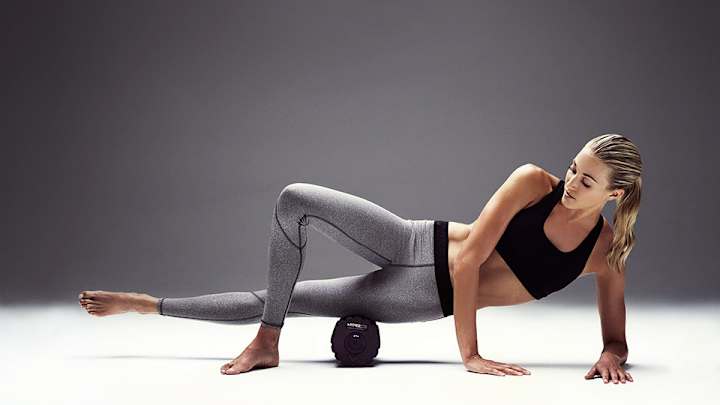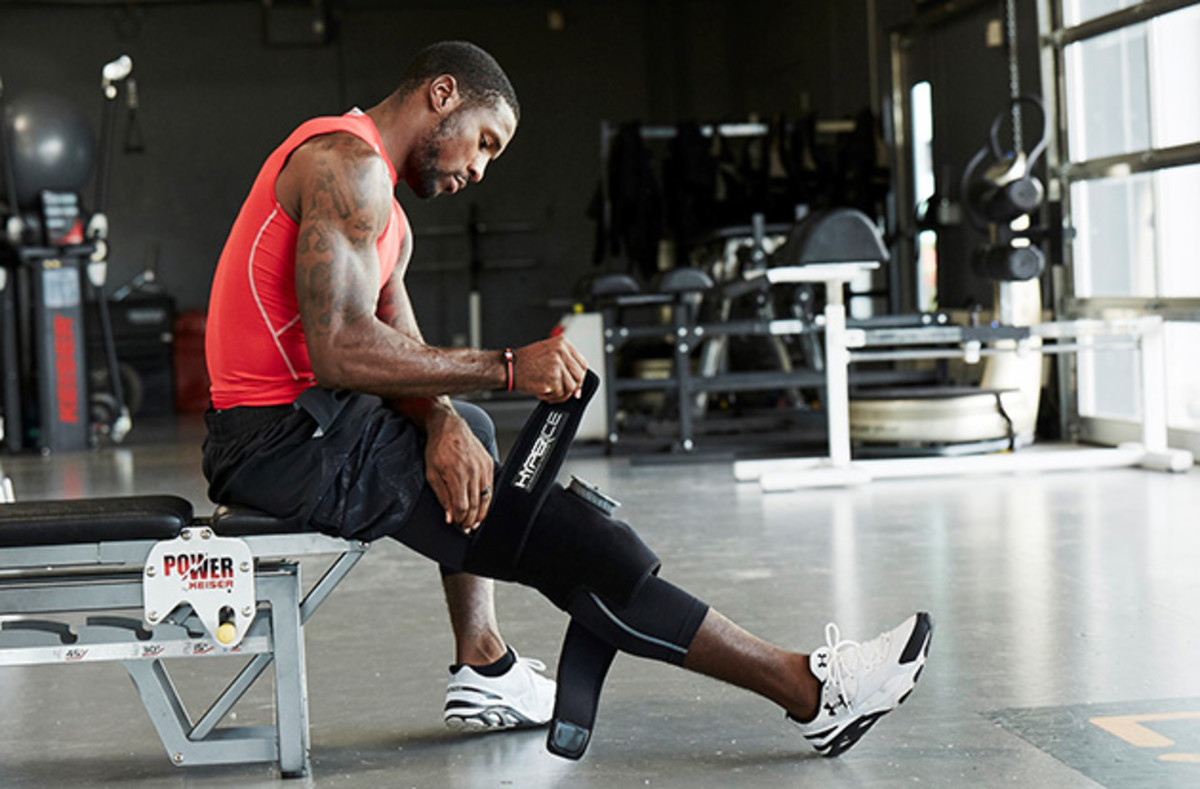Tech Talk: Recovery method offers cold comfort and good vibrations

Olympic skier Lindsey Vonn has had injuries aplenty. First it was a knee. Then a knee again. Right now she is recovering from a broken ankle. “I always have some sort of pain,” Vonn says. “I seem to always be needing [to ice] something every day.”
While ice has long been a recovery mainstay and foam-rolling muscles has taken on a newfound popularity, California-based Hyperice has brought a tech-first twist to both recovery elements.
“When they were first launching I had just had my first knee surgery, so I was looking for basically anything that would help my recovery and get me on the slope faster,” Vonn says. “One thing I struggled with was being able to ice and travel with ice.”
New ice
Ice can’t be that technical, right? Robbie Davis, GameShape Inc. trainer of a variety of athletes, including the Clippers’ Blake Griffin, says that isn’t the case. The Hyperice product brings in two aspects that make a bag of ice more than a bag of ice.
By employing compression and having an air-release valve Davis—and users of Hyperice—can fill the ice chamber with ice and have compression material apply firm pressure to the ice cell to make an “ice cast” around a specific part of the body. The compression combines with the air release valve to ensure the ice stays in constant contact with the body.
Max Fennell continues to lead the way for more diversity in triathlon athletes
“Now you don't have ice water dripping all over the place as the ice melts,” Davis says. “The air-release valve allows us to keep releasing the bag and keep the ice in the bag.”
Davis requires his athletes to ice after every workout. Combining compression “helps in pushing out any swelling that is accumulating on the body.” Davis says that every workout—even without an injury involved—creates microtearing and the combination of ice and compression helps clear that swelling.
Davis says that his elite athletes enjoy the look of the Hyperice because it doesn’t look like ice. “Some guys, you have to sell them on this,” he says. “Some guys don’t like to ice because it makes them look hurt. You can decrease recovery time by icing every day.”
Using body-part specific wraps, Davis has his athletes hitting different areas of the body with the ice. Most athletes ice the knees—Vonn says she still ices her knees even though they have healed, but adds that she was pleased to see she had an ankle-specific wrap for her latest injury—but shoulders also prove a common target. Davis has Griffin and all his athletes hitting the ice for 20 minutes at the end. Always 20 minutes.
“People don’t know you are supposed to ice after you work out or train or compete,” Davis says. “They think, ‘I’m not hurt, I feel great.’”

Vibrating and rolling
“Foam rolling is something I hate doing, but is really beneficial,” Vonn says. In the past, Vonn would foam roll and then use vibrating therapy tools to loosen up soft tissue to release fascia. The Hyperice Vyper roller puts adjustable-speed vibration in a foam roller, saving Vonn time.
Lindsey Vonn's winter success is built on dedicated summer training
occasionally before a workout, sans the vibration, and does the full vibration-enabled rolling before bed, when she stretches and flushes her body.
Davis has Griffin hitting the roller 10 to 15 minutes before every workout, spending anywhere from two to 10 minutes on each body part. “I have Blake foam roll and then stretch immediately after, getting more benefits [after rolling],” Davis says.
Rolling before activity breaks up the fascia loosens and elongates the muscle tissues. Using it after activity does the same thing, after your body has tightened up. “Adding vibration enhances the overall effect,” Davis says. “I find a 25- to 30-percent range of motion increase using the vibrating roller over a regular roller. It is more intense.”
Vibration also helps circulation, Davis says, and has an effect on the nervous system that changes the system’s response to pain. “Getting [athletes] on a vibrating foam roller versus a regular foam roller gives them an extra oomph into their range of motion and gives them a pain reliever.”
Whether recovering from injury, as Vonn seems perpetually to be doing, or simply recovering from a workout, elite athletes have started opting for proven recovery methods with a bit of a high-tech twist.
Tim Newcomb covers stadiums, sneakers and design for Sports Illustrated. Follow him on Twitter at @tdnewcomb.
